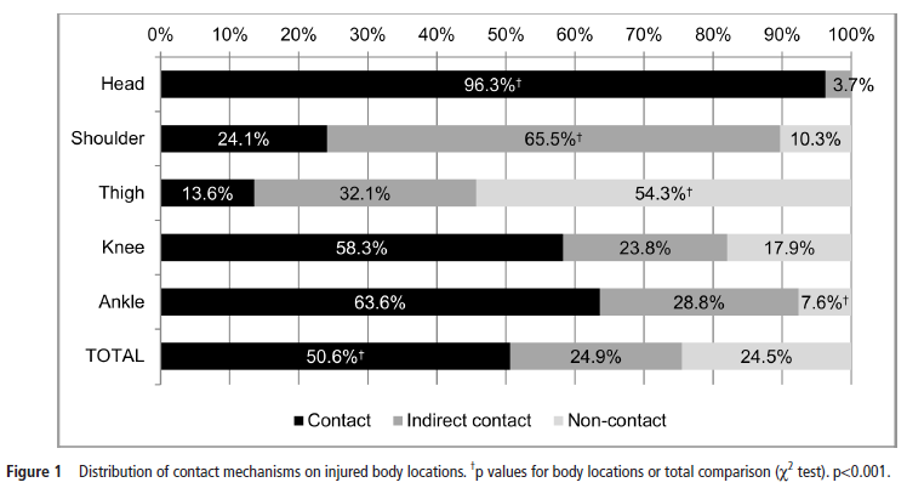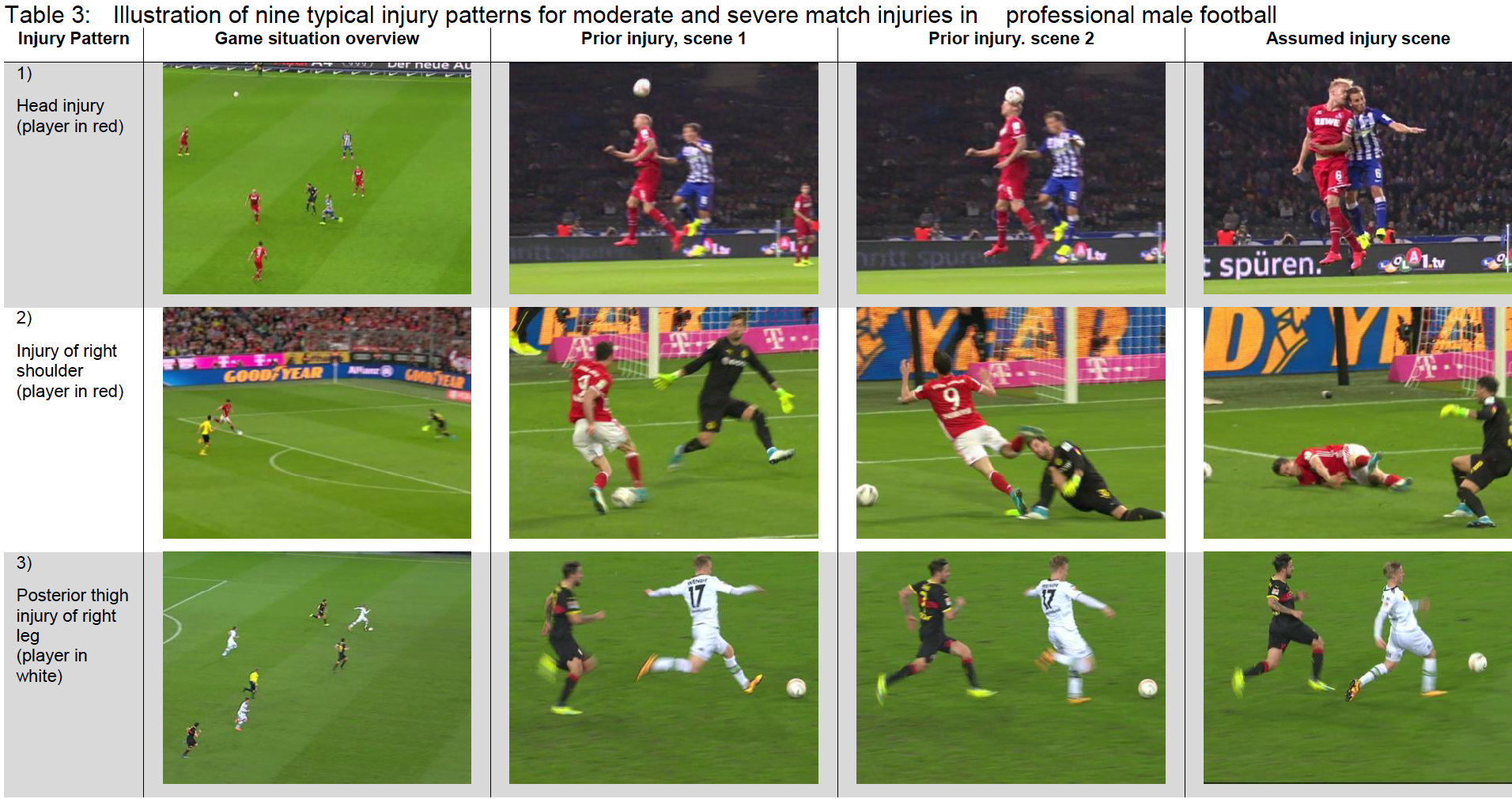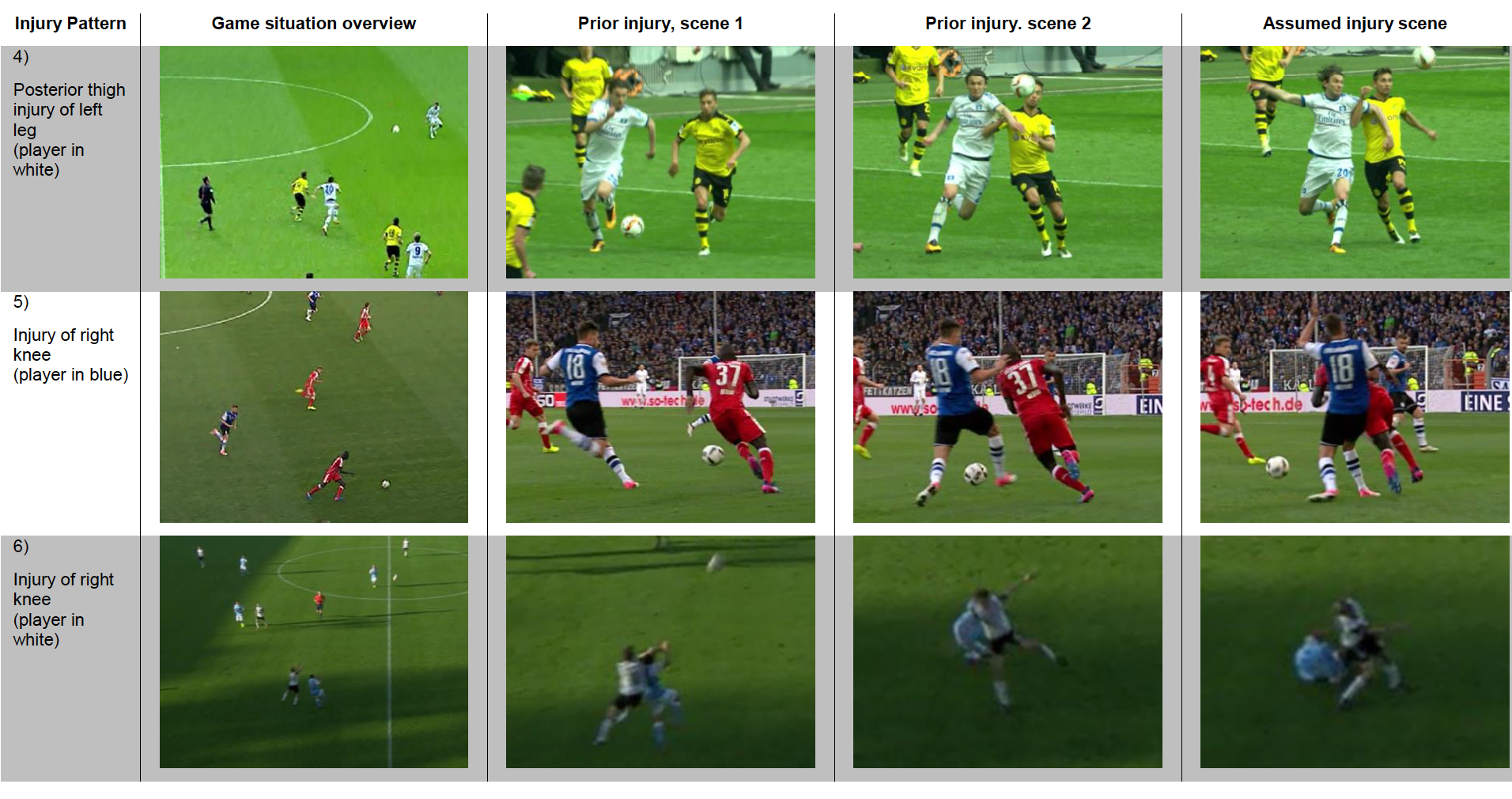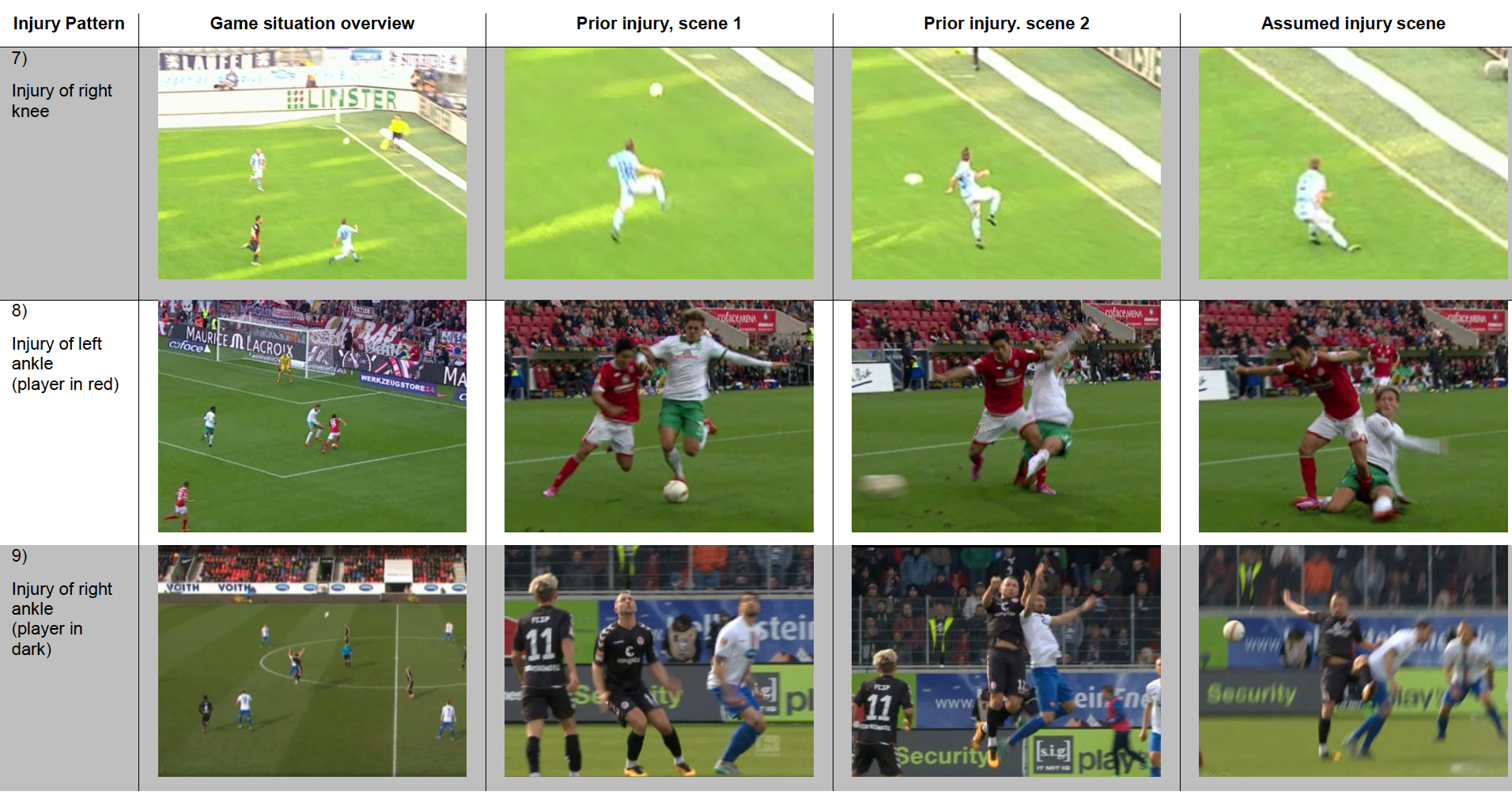Part of the BJSM’s #KnowledgeTranslation blog series
To prevent injuries, a precise description of the injury-inciting event can be helpful.1 2 Thus, the purpose of this study was to systematically video-analyse moderate and severe match injuries from German Bundesliga (BL) and Bundesliga 2 (BL2).
How did we do this?
We searched for all moderate and severe match injuries (>7 days of time loss) that occurred during the observation period of the three consecutive seasons 2014/15, 15/16 and 16/17.3 Two raters then independently assessed the injuries for game situation, player and opponent behaviour, referee decision, and injury mechanisms.
What did we find?
Of the 857 moderate and severe match injuries during the observation period, 345 (40,3%) injury situations could be clearly identified and were thus included in the analysis. Most of the identified injuries affected:
- the knee (24.3%)
- thigh (23.5%)
- ankle (19.1%)
- shoulder (8.4%)
- and head (7.8%)
Regarding the single injured body locations, direct contact mechanisms were significantly over-represented in head injuries, indirect contact mechanisms in shoulder injuries, and non-contact mechanisms in thigh injuries (p<0.001). More than 70% of all contact injuries were not associated with foul play. This is shown nicely in Figure 1.
Regarding the overall injury context, nine typical injury patterns for moderate and severe match injuries were identified, and they are detailed below (with some practical examples in the table at the bottom of this blog!).




What are the take home points?
- The nine common injury patterns in German professional male football differed substantially in their mechanisms and causes. Thus, depending on the respective injury type, preventive approaches must be multifaceted and wide-ranging.
- A key finding of the study is that tackling is a high-risk football-specific action; tackling (as distinct from being tackled) was the cause of many acute knee injuries. Tackling techniques may warrant focus as a way to prevent injuries.
- Less than 30% of all contact injuries were associated with foul play of the opponent. In almost 20% of all contact-injuries, the injured player was in violation of the rules.
- Fast running/sprinting was the most frequent movement pattern in non-contact injuries. Particularly thigh muscle injuries, irrespective of whether they affected the anterior, posterior or adductor muscles, show sprinting or lunging, both rapid force movements with high eccentric loads, to be the most frequent injury causes. In both identified typical thigh injury patterns, overload was the predominant detailed injury mechanism. These findings indicate great potential for prevention with the main risk factors appearing to be intrinsic in nature. Thus, we conclude a well-developed intermittent aerobic fitness and high chronic loads in high-speed running and sprinting might present beneficial preventive approaches.
- The large and constantly growing video database developed for the present study should be used in education programmes for coaches, referees and other professions to deliver specific training for this purpose.
- A consensus on the definitions of playing situations, player and opponent behaviour, and gross and detailed biomechanical injury mechanisms is needed for a better comparison of existing and future aetiological studies. Our observation form and instruction manual provides a reference for a future consensus statement on definitions and data collection procedures relating to events that incite sports injuries.
Authors and Affiliations:
Christian Klein,1 2 Patrick Luig,1 2 3 Thomas Henke,1 Hendrik Bloch,2 Petra Platen1
1Faculty of Sports Science, Department of Sports Medicine and Sports Nutrition, Ruhr University Bochum, Bochum, Germany
2Department for Sports Injury Prevention, VBG, Hamburg, Germany
3German Handball Federation, Dortmund, Germany
Competing Interests:
CK and HB are still, and PL has earlier been, employed with the German statutory accident insurance for professional athletes (Verwaltungs-Berufsgenossenschaft (VBG)).
References:
1Bahr R, Krosshaug T. Understanding injury mechanisms: a key component of preventing injuries in sport. Br J Sports Med 2005;39:324–9.
2Serner A, Mosler AB, Tol JL, et al. Mechanisms of acute adductor longus injuries in male football players: a systematic visual video analysis. Br J Sports Med 2019;53:158–64.
3Bahr R, Clarsen B, Ekstrand J. Why we should focus on the burden of injuries and illnesses, not just their incidence. Br J Sports Med 2018;52:1018–21.